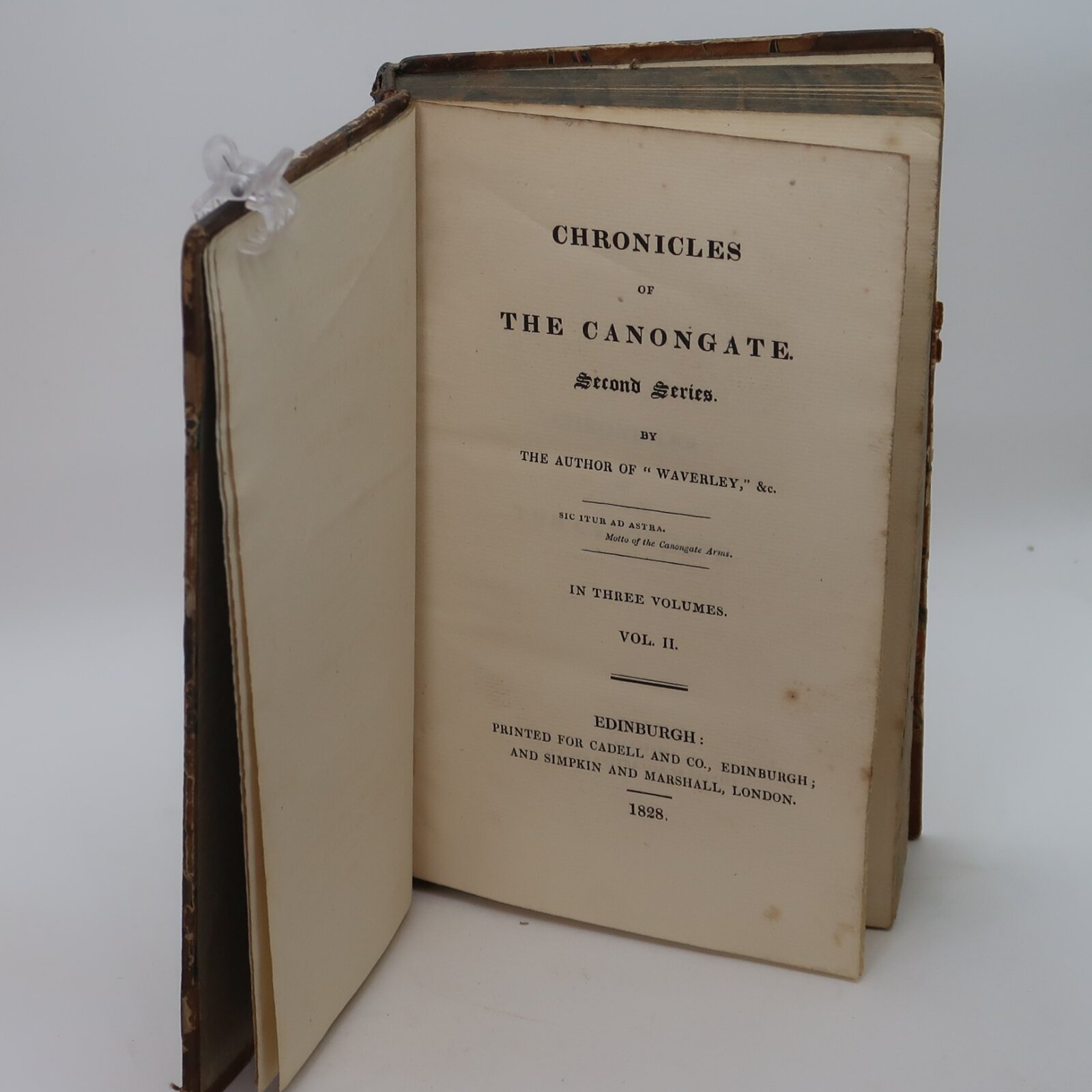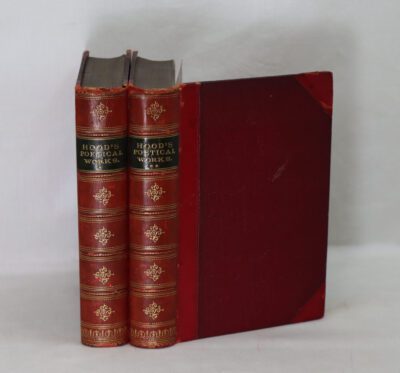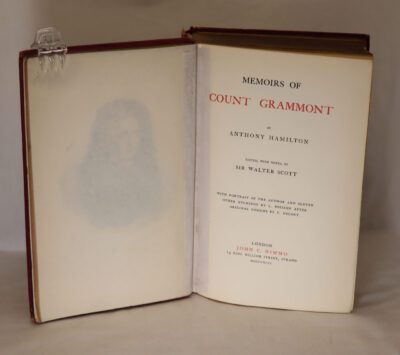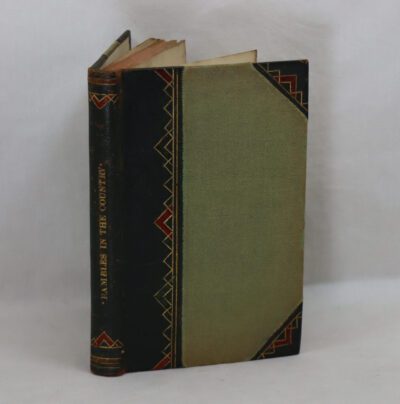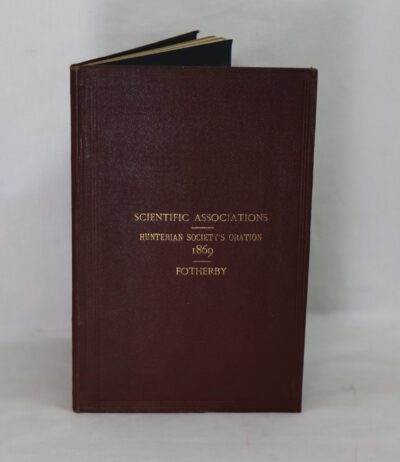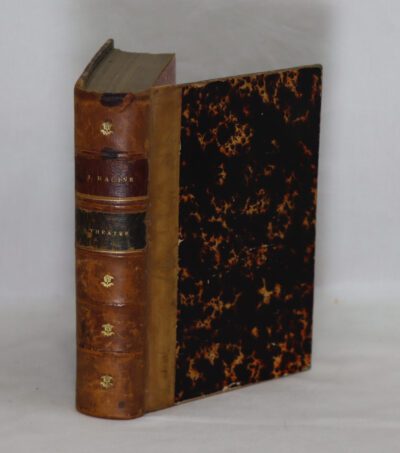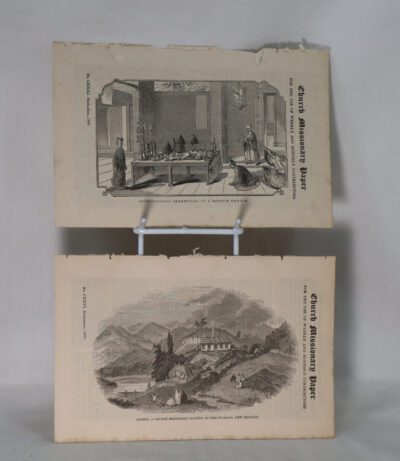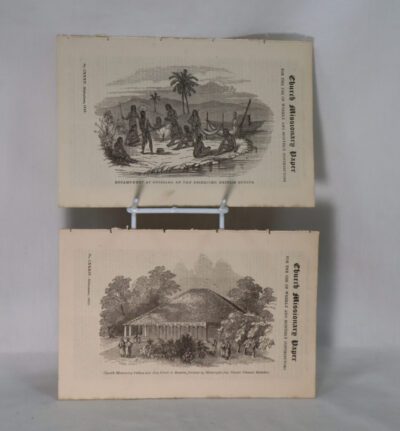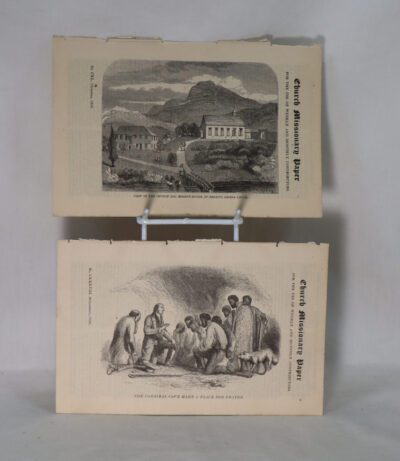Chronicles of the Cannnongate.
By Sir Walter Scott
Printed: 1827-28
Publisher: Caddell & Co. Edinburgh
| Dimensions | 13 × 20 × 3 cm |
|---|---|
| Language |
Language: English
Size (cminches): 13 x 20 x 3
Condition: Fine (See explanation of ratings)
Item information
Description
Tan calf spine with red title plates, black and gilt banding and gilt title. Tan Marbled boards.
Still a great read.
Volume 2 out of three. Second Series.
Chronicles of the Canongate is a collection of stories by Sir Walter Scott, published in 1827 and 1828 in the Waverley novels series. They are named after the Canongate, in Edinburgh.
- 1st series (1827):
- ‘Chrystal Croftangry’s Narrative’
- ‘The Highland Widow’
- ‘The Two Drovers’
- The Surgeon’s Daughter
- 2nd series (1828):
- St Valentine’s Day, or, The Fair Maid of Perth
After his financial ruin at the beginning of 1826, Scott committed himself to writing works that would produce funds for the Trustees of James Ballantyne & Co., including the massive Life of Napoleon. However, he retained the right to produce less substantial works for his own benefit, and the first result was the collection of shorter fiction known as Chronicles of the Canongate. This was in two volumes, rather than the three occupied by most of the Waverley Novels, and its disparate nature meant that it would not interfere with his official writing project. The first mention of the two-volume publication actually envisages it being totally occupied by the tale which was to be entitled The Surgeon’s Daughter: in his diary for 12 May 1826 Robert Cadell records a proposal from Scott to write ‘a small Eastern Tale’, which he agreed to publish as part of his strategy to set up as an independent publisher after the crash which had ruined Archibald Constable, Ballantyne, Scott, and himself. In the event The Surgeon’s Daughter was to share the two volumes of the first series of Chronicles of the Canongate with ‘Chrystal Croftangry’s Narrative’ and two short stories, ‘The Highland Widow’ and ‘The Two Drovers’. The ‘Narrative’ and more than half of ‘The Highland Widow’ were composed between May and July 1826, but for almost a year Scott then devoted his full energies to the Life of Napoleon which he finished on 7 June 1827. He apparently resumed ‘The Highland Widow’ on the 20th and finished it before the end of the month, as well as writing an Introduction in his own name (he had officially acknowledged his authorship of the Waverley novels on 23 February). ‘The Two Drovers’ was probably composed in the first half of July, completing the first volume, but while he was waiting at the end of June to find out how long that story needed to be, he had already begun The Surgeon’s Daughter, the sole occupant of the second volume, resuming it on 27 July and completing it on 16 September.
The first series of Chronicles of the Canongate was published in Edinburgh by Cadell and Co. on 30 October 1827 and in London by Simpkin and Marshall on 5 November. The print run was 8750 and the price one guinea (£1 1s or £1.05).[2] Scott revisited the collection in August and early September 1831, providing it with brief introductory material and notes and introducing a few textual changes. The ‘Narrative’ and the two short stories appeared posthumously in October 1832 in Volume 41, supplemented with three additional stories which had appeared in 1828 in the 1829 number of the annual The Keepsake. The Surgeon’s Daughter was deferred to the final Volume 48 in April 1833 where it appeared along with the conclusion of Castle Dangerous.
The standard modern edition of the first series of Chronicles of the Canongate, by Claire Lamont, was published as Volume 20 of the Edinburgh Edition of the Waverley Novels in 2000: this is based on the first edition with emendations mainly from the manuscript; the ‘Magnum’ material appeared in Volume 25b (2012).
Sir Walter Scott, 1st Baronet FRSE FSAScot (15 August 1771 – 21 September 1832), was a Scottish historical novelist, poet, playwright and historian. Many works remain classics of in English-language and Scottish literature, notably the novels Ivanhoe, Rob Roy, Waverley, Old Mortality (or The Tale of Old Mortality), The Heart of Mid-Lothian and The Bride of Lammermoor, and the narrative poems The Lady of the Lake and Marmion. Scott was an advocate, judge and legal administrator by profession. Throughout his career he combined writing and editing with daily work as Clerk of Session and Sheriff-Depute of Selkirkshire. He was prominent in Edinburgh’s Tory establishment, active in the Highland Society, a long-term president of the Royal Society of Edinburgh (1820–1832) and vice president of the Society of Antiquaries of Scotland (1827–1829). His knowledge of history and literary facility made him seminal in establishing the historical novel genre and an exemplar of European Romanticism. He was created a baronet “of Abbotsford in the County of Roxburgh”, Scotland, on 22 April 1820; the title became extinct on the death of his son in 1847.
Want to know more about this item?
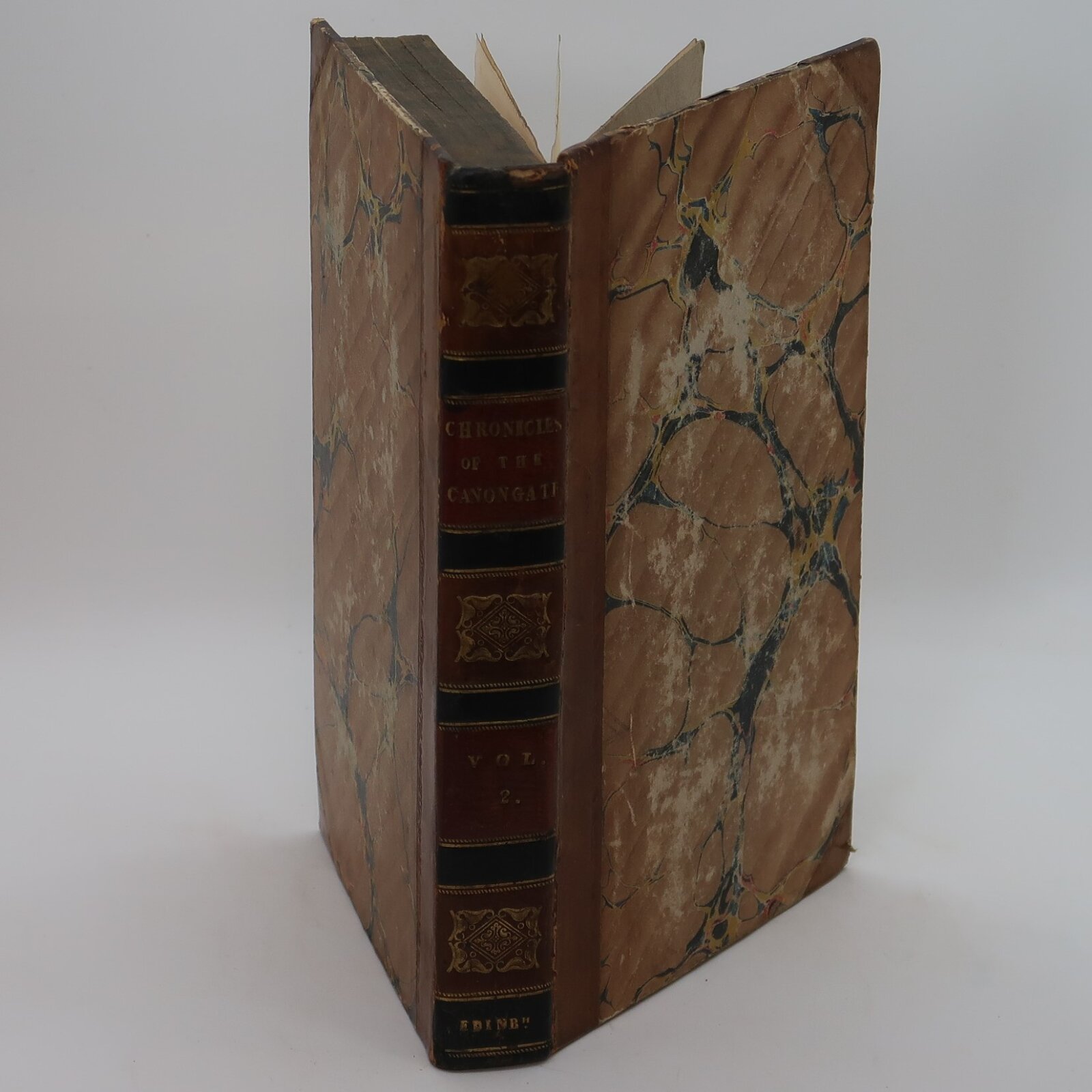
Related products
Share this Page with a friend

